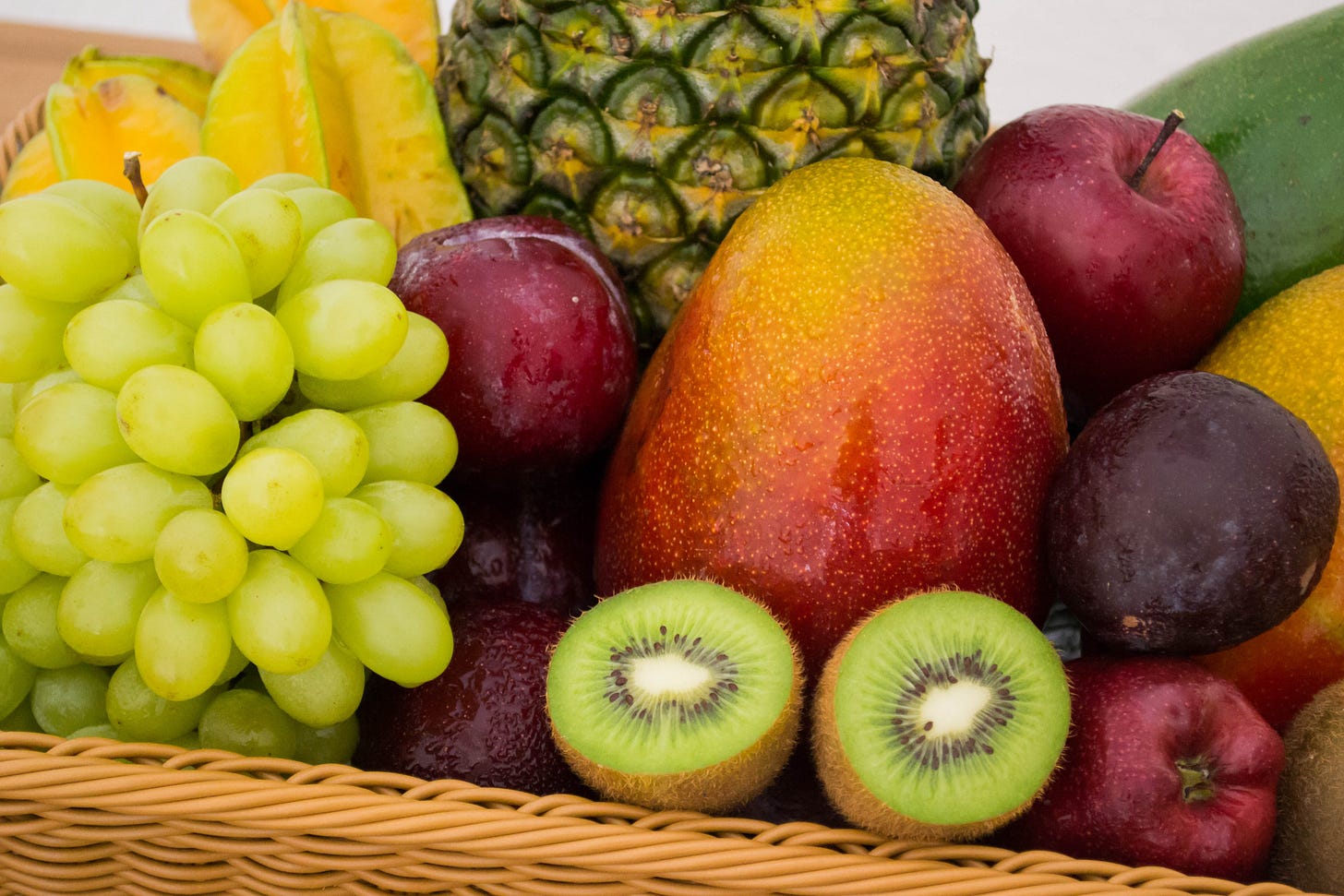Welcome to Thursday Things! If you enjoy this edition, please click the heart icon in the header or at the end of the post to let me know.
“I just hope the aliens don’t explode my head again.” Photo by bruce mars on Unsplash
I’m trying to sleep here!
Do you believe in aliens, ghosts, demons, or the possibility of communicating with the dead? Then chances are you’re not sleeping as well as people who don’t share those beliefs. And no wonder! Who can sleep with demons, ghosts, and aliens making all that racket? Hold it down, you guys!
It’s not just me saying this — it’s science! From the Journal of Sleep Research:
The associations between paranormal beliefs and sleep variables
Poorer subjective sleep quality (lower sleep efficiency, longer sleep latency, shorter sleep duration and increased insomnia symptoms) was associated with greater endorsement of belief in: (1) the soul living on after death; (2) the existence of ghosts; (3) demons; (4) an ability for some people to communicate with the dead; (5) near-death experiences are evidence for life after death; and (6) aliens have visited earth.
Unclear to me if believing more than one of those propositions makes your sleep even worse. But aliens in particular want to blow up your head, it seems:
In addition, episodes of exploding head syndrome and isolated sleep paralysis were associated with the belief that aliens have visited earth.
I was not familiar with exploding head syndrome, but it sounds painful. And fatal.
Fortunately, it’s not that bad:
Exploding head syndrome (EHS) is a sleep disorder characterized by loud noises or a perception of explosion in one's head during wake–sleep or sleep–wake transitions (Sharpless, 2014). This experience has also been linked to belief in the supernatural and reported ostensibly paranormal experiences.
It turns out all sorts of paranormal entities are messing with people’s sleep and causing sleep paralysis (SP):
Research has also explored the specific characteristics and beliefs associated with SP in samples from specific cultures. In Egypt, a commonly held belief is that SP is caused by jinn—supernatural beings that attack their victims (Jalal & Hinton, 2013). In Italy, SP has been proposed as reflecting an assault by the Pandafeche—an evil witch or terrifying humanoid cat (Jalal et al., 2015). It is noteworthy that attribution of supernatural explanations to episodes has been linked to heightened levels of anxiety (Fukuda et al., 1987; Wing et al., 1994). A study of American college students catalogued the non-human beings perceived during ISP, with “shadow people” and ghosts most frequently reported (Sharpless & Kliková, 2019).
Except in Denmark, where everything has a rational explanation:
In contrast, another study found that the vast majority (95%) of their respondents (Danish participants) endorsed the view that their SP has a physiological origin (e.g. brain malfunctioning; Jalal & Hinton, 2013).
So if you want a good night’s sleep free of supernatural interruptions, try sleeping in Denmark. Unless your name is Hamlet.
Gatorfish!
Why, scientists? Why? Why do you keep doing this?
These scientists used CRISPR to put an alligator gene into catfish
Millions of fish are farmed in the US every year, but many of them die from infections. In theory, genetically engineering fish with genes that protect them from disease could reduce waste and help limit the environmental impact of fish farming. A team of scientists have attempted to do just that—by inserting an alligator gene into the genomes of catfish.
Allegedly this alligator gene will do nothing more than help catfish resist disease:
The alligator gene, which Dunham’s research turned up as a potential answer, codes for a protein called cathelicidin. The protein is antimicrobial, says Dunham—it’s thought to help protect alligators from developing infections in the wounds they sustain during their aggressive fights with each other. Dunham wondered whether animals that have the gene artificially inserted into their genomes might be more resistant to diseases.
…The resulting fish do seem to be more resistant to infections.
Allegedly. The article is strangely silent on whether this dangerous mad scientist experiment could result in unkillable gator-catfish hybrids terrorizing our lakes and waterways. But I think we all know that’s inevitable.
The gene-editing procedure used by the team is fiddly, and it would probably need to be done for each round of fish spawning for the hybrid catfish commonly used in fish farming. “It’s just too difficult to produce enough of these fish to get a viable, genetically healthy line going,” he says.
Yeah, sounds like they’ve got everything under control. Nothing to worry about here!
Also, fun fact I did not know — Americans eat a lot of catfish:
Americans go through a lot of catfish. In 2021, catfish farms in the US produced 307 million pounds (139 million kilogram) of the fish. “On a per-pound basis, anywhere from 60 to 70% of US aquaculture is … catfish production,” says Rex Dunham, who works on the genetic improvement of catfish at Auburn University in Alabama.
And soon catfish — or gatorfish — will eat a lot of Americans. Thanks, scientists!
Soon, humans. Soon. Photo by Will Turner on Unsplash
I’ll take that extra CRISPR
All hysteria aside, genome editing technology has made incredible strides in the last decade and brought — I think — more benefits in fighting disease, improving crops, and other advantages than it has downside.
CRISPR technology: A decade of genome editing is only the beginning
The advent of clustered regularly interspaced short palindromic repeat (CRISPR) genome editing, coupled with advances in computing and imaging capabilities, has initiated a new era in which we can not only diagnose human diseases and even predict individual susceptibility based on personal genetics but also act on that information. Likewise, we can both identify and rapidly alter genes responsible for plant traits, transforming the pace of agricultural research and plant breeding. The applications of this technology convergence are profound and far reaching—and they are happening now. In the decade since the publication of CRISPR-Cas9 as a genome editing technology, the CRISPR toolbox and its applications have profoundly changed biological research, impacting not only patients with genetic diseases but also agricultural practices and products.
If you have subscription or other access to Science, go read the whole article. I’m sure it’s fascinating, but I’m stuck on this side of the paywall.
Fruit is your friend
Not going to lie — we’re a sucker for listicles here at Thursday Things. Here is a list of 10 Fruits You Should Eat Every Week, According to a Dietitian
Blueberries - “nutritional powerhouse”
Apples - “many anti-inflammatory and antioxidant properties”
Oranges - More than vitamin C! “provide a unique set of nutrients, including potassium, iron, calcium, vitamin E and numerous B vitamins.”
And seven more. Go read the article!
I eat six out of ten of the recommended fruits on a regular basis, so I think that’s a passing grade. But I’ll try to work a few more into my diet.
Try some delicious fruit! You’ll feel better.
And taste better when the gatorfish gets you.
Why you got to do the kiwi like that? Photo by Jonas Kakaroto on Unsplash
Thank you for reading!
Please click the hearts, leave a comment, and use the share feature to send this issue to a friend who might enjoy it. See you next Thursday!





